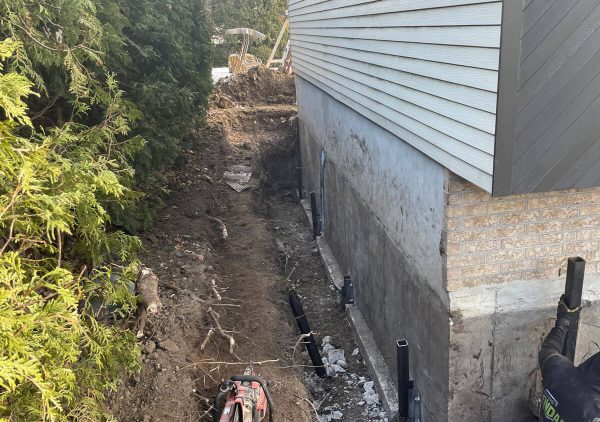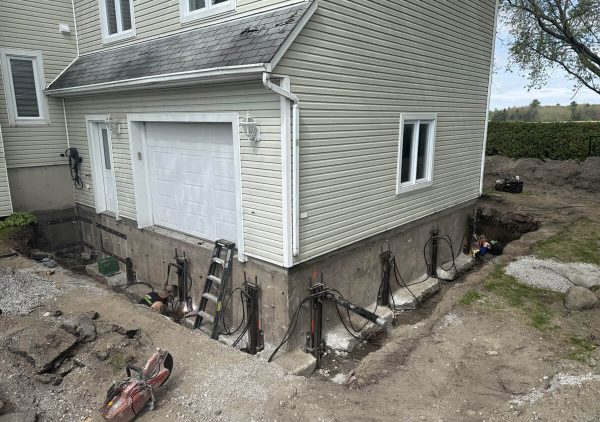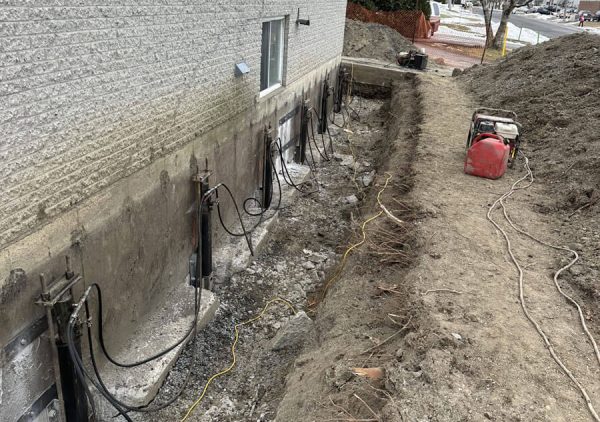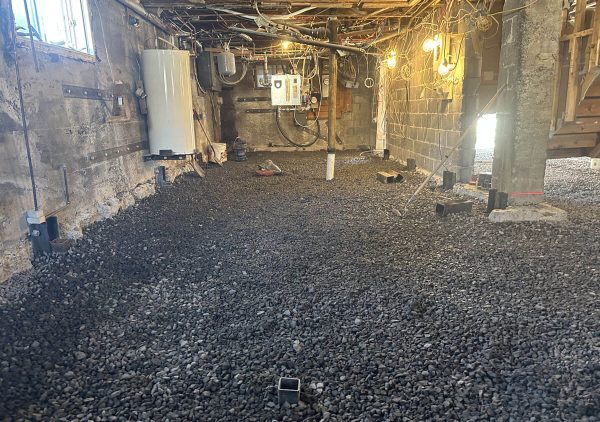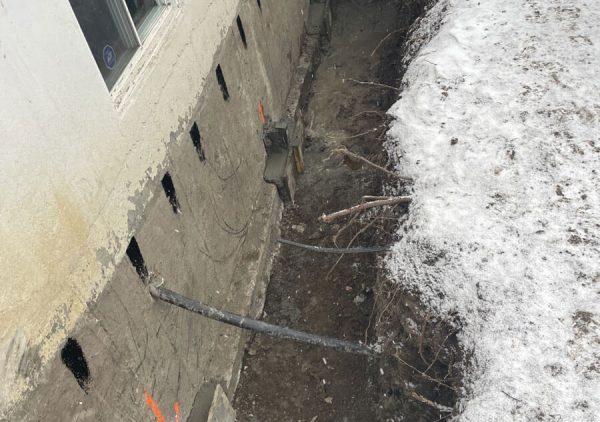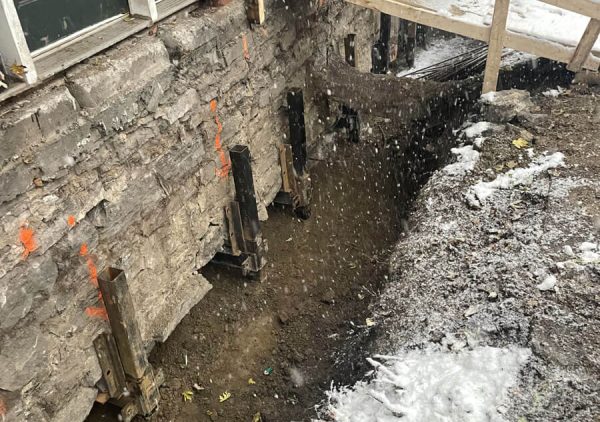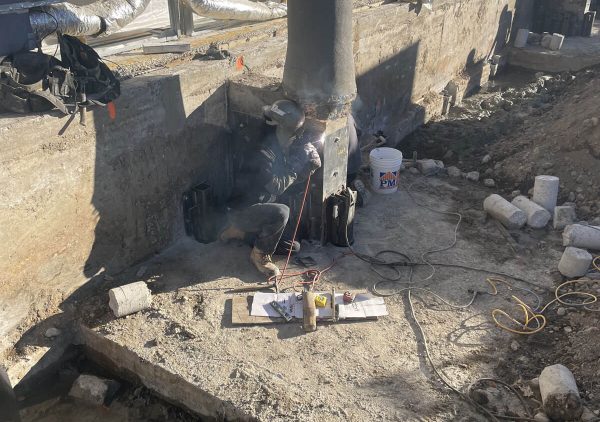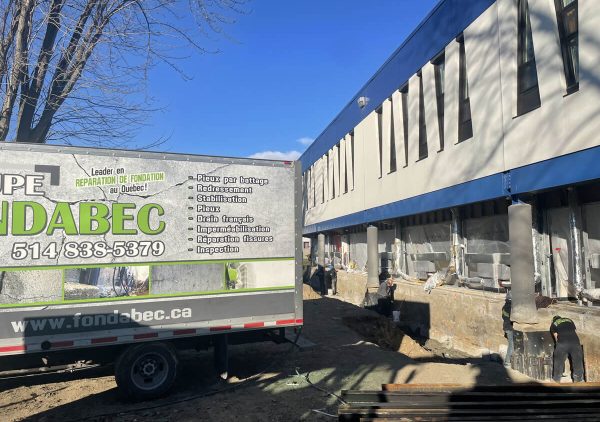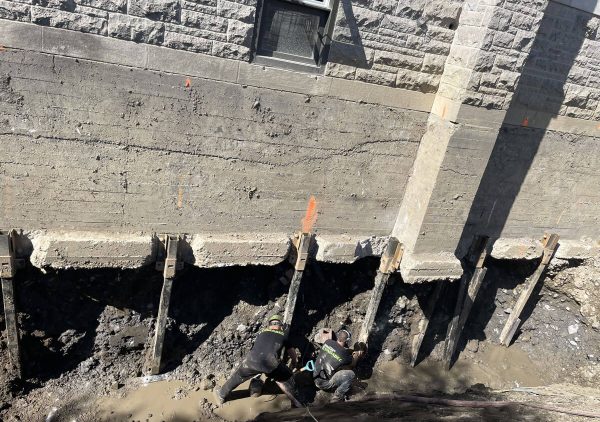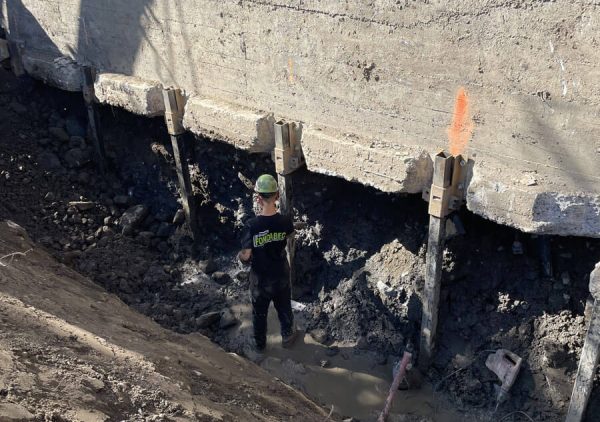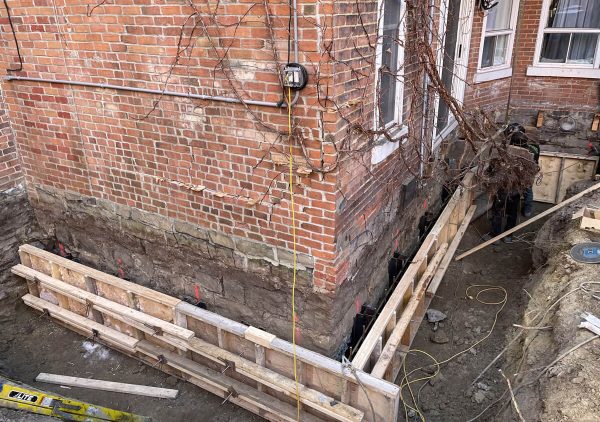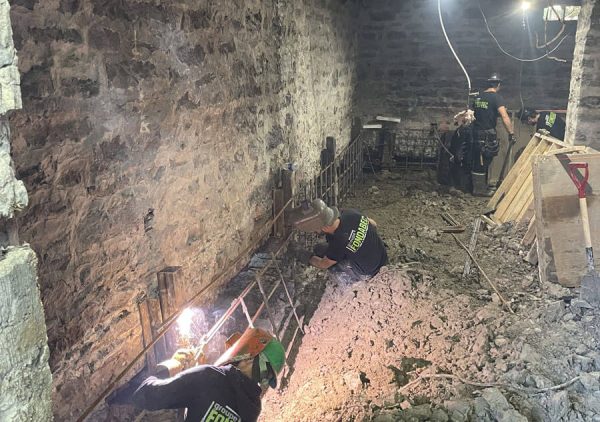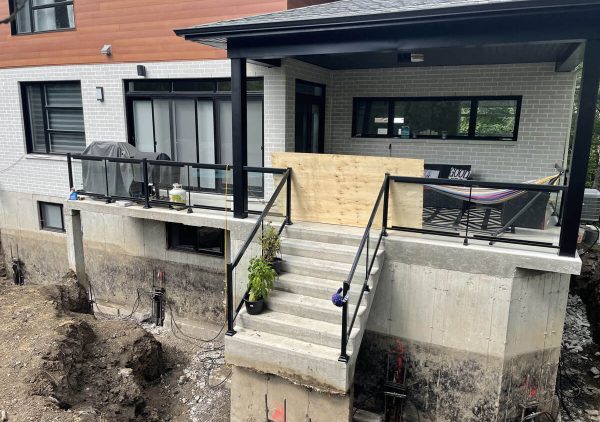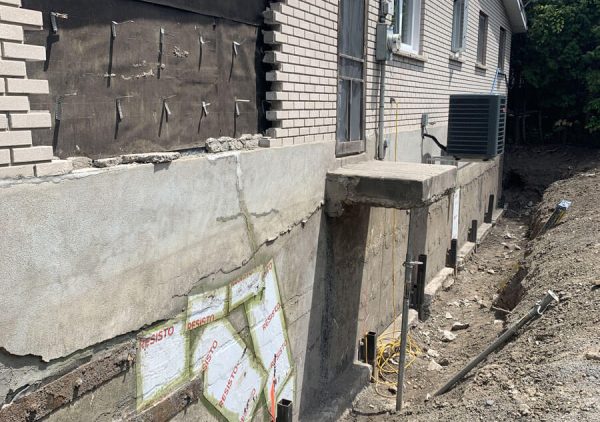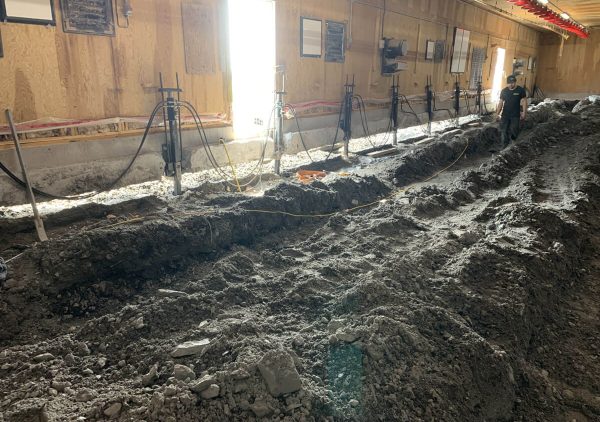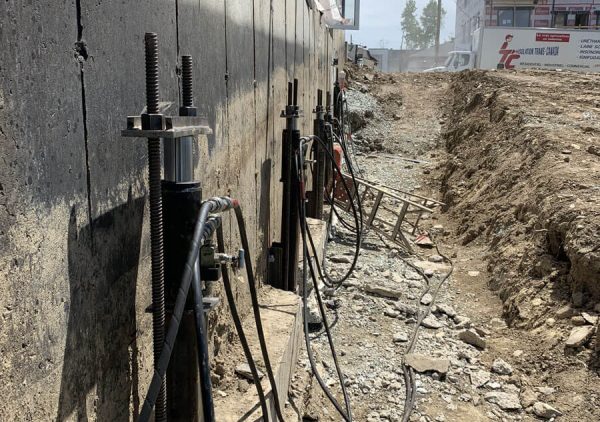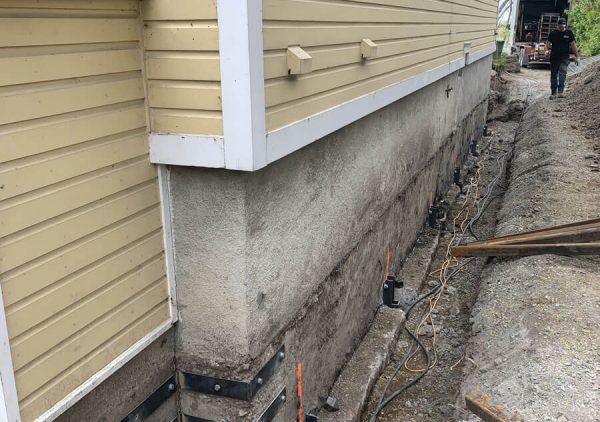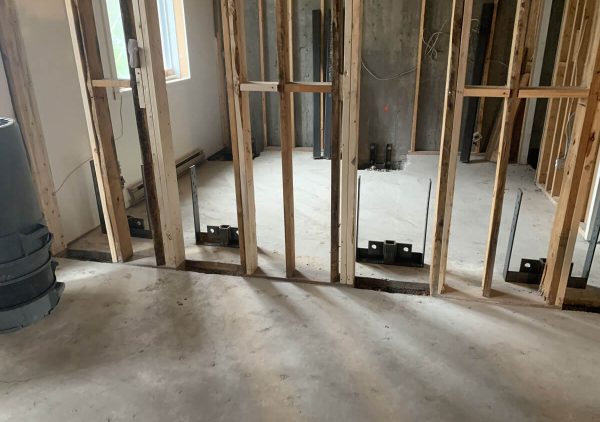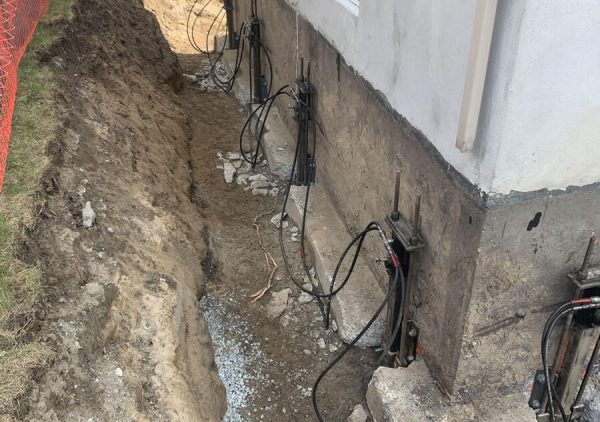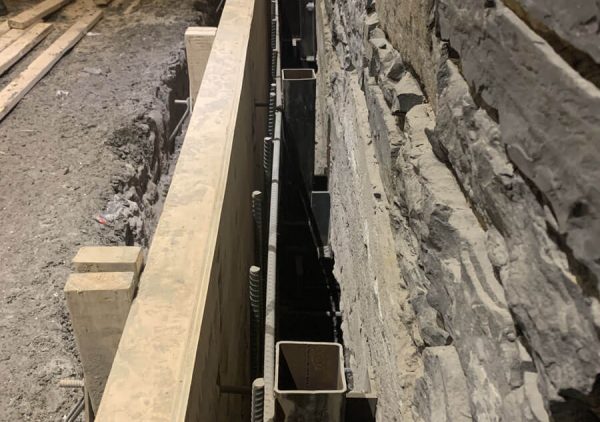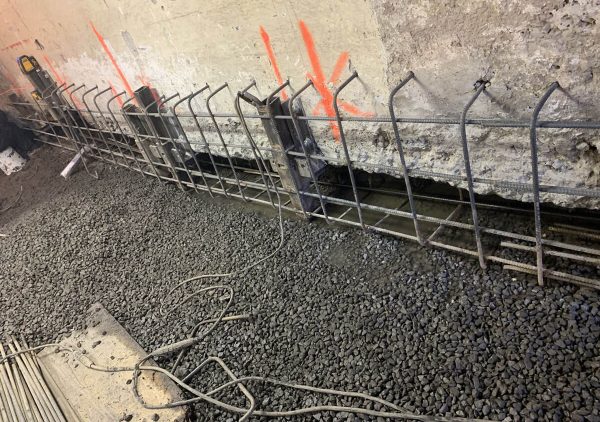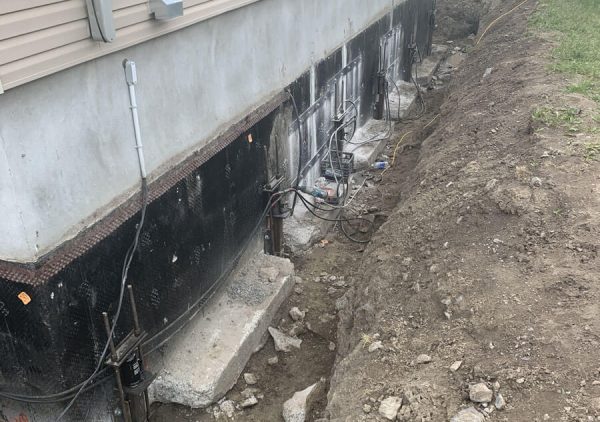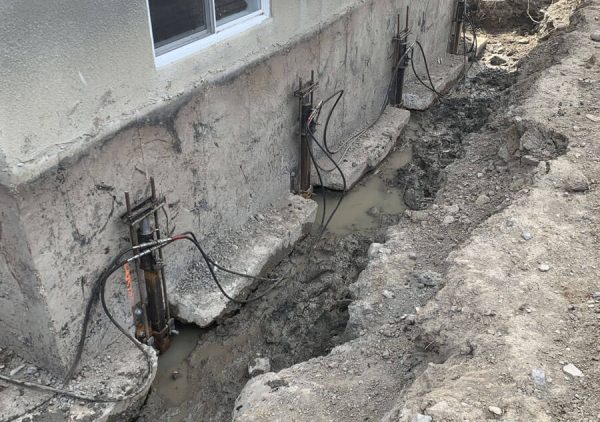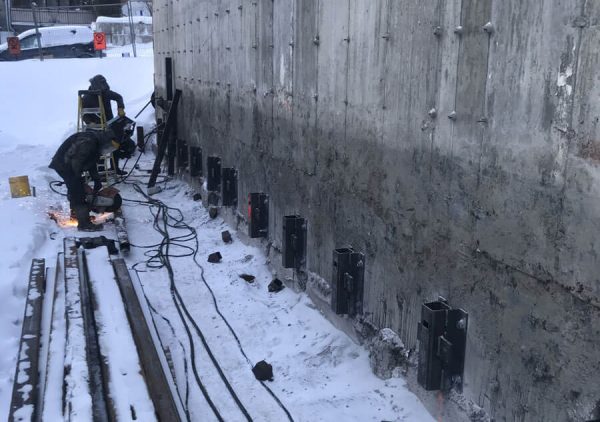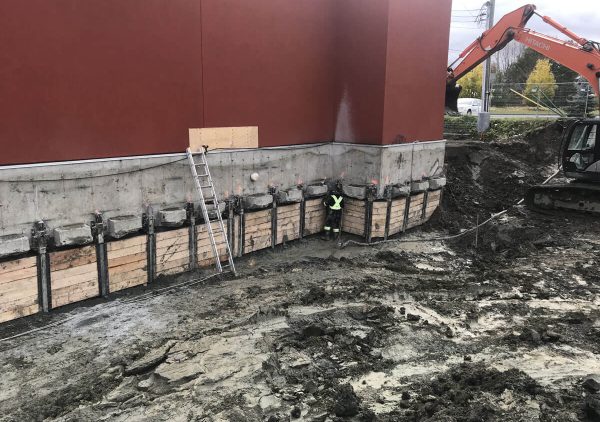Hydraulic piles: stabilize and straighten your existing foundations
Restore your home’s stability with Fondabec
Are you noticing cracks in your walls, uneven floors, or doors and windows that no longer close properly? These are common signs of foundation settlement. Hydraulic piles, also known as jacked piles, are one of the most reliable solutions to correct these issues without having to rebuild your entire foundation.
At Fondabec, we specialize in foundation stabilization and underpinning for residential, commercial, and institutional buildings across Quebec. Using state-of-the-art hydraulic equipment, we can lift and stabilize existing foundations by transferring the load of your structure to stable soil layers or directly to bedrock.
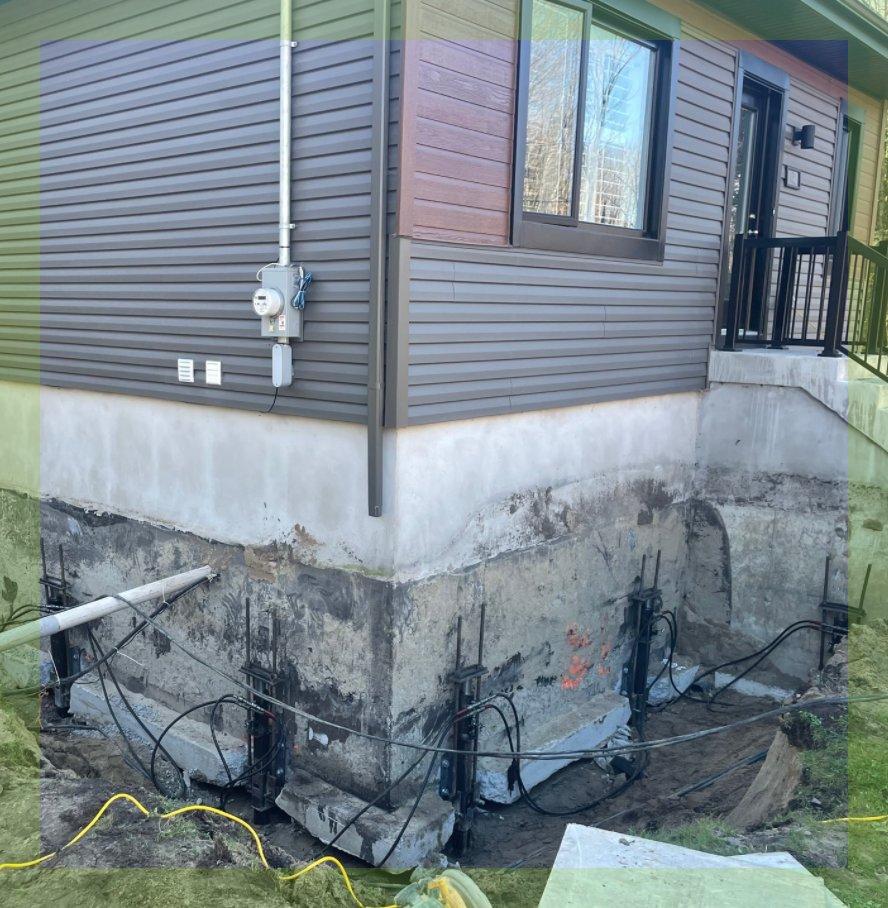
Why choose hydraulic piles?
Foundation piles play an essential role in stabilizing and straightening residential and commercial buildings constructed on unstable soil (whether clay, backfilled, or poorly compacted). These conditions are frequently encountered in Montreal and several regions of Quebec.
When the soil can no longer adequately support the weight of a structure, it causes ground movement that can compromise the integrity of the building. In this case, installing piles transfers the load from the foundation to deeper, more stable soil layers (such as bedrock or rock), ensuring the long-term safety of the structure.
Ignoring a foundation problem can have serious consequences: cracks, water infiltration, structural misalignment, and even loss of property value. Before the damage becomes irreversible, it is important to know how to recognize the early signs of weakness.
Signs of settling or foundation problems
Inside your building
Inside your building, certain visible changes, such as cracks or uneven floors, can reveal underlying foundation problems. Here’s what to watch for.
Cracks in interior walls
Cracks or bulges in floors
Doors and windows that stick
Sloping floors or non-vertical walls

Water infiltration in the basement
Outside your building
Cracks in foundations or exterior walls
Visible subsidence of a section of the building
Misaligned openings (doors, windows, frames)
Movement or misalignment of the chimney
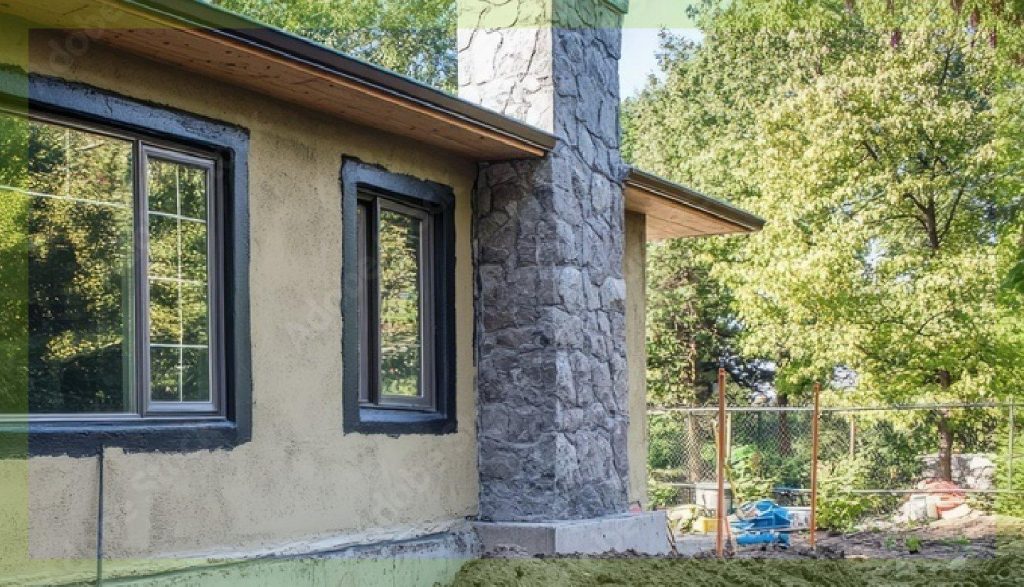
When to take action?
When is it best to take action?
- As soon as a new or rapidly developing symptom appears (cracks that are getting bigger, doors that are sticking more and more, etc.).
- When buying or selling a building: a sound foundation increases the value and security of the transaction.
- Before winter, to prevent ground frost from amplifying movements.
- If you are planning an expansion or major renovation: an unstable foundation can compromise the entire project.

Hydraulic piles (or jacked piles)
When to use hydraulic piles?
Hydraulic piles are designed to correct subsidence in existing foundations. When a building begins to settle, move, or lose stability, this technique allows it to be accurately straightened while ensuring its structural durability.
Hydraulic piles are also used
- when adding additional load to an existing foundation (such as adding a floor)
- during decontamination work, pyrite
- for the support and straightening of structures such as slabs, balconies, or concrete walls.
Technical installation
Hydraulic piles are installed directly on existing foundations using anchor shoes attached to the base of the walls. High-corrosion-resistant steel columns (HP type) are then driven into the ground using a hydraulic jack.
- The pile is driven until it reaches refusal.
- Once refusal is reached, the weight of the building is transferred to the piles.
- Strong welds are made at three points: at the top, bottom, and center of the shoe.
- The interior of the pile is filled with concrete to ensure its strength

This method is particularly suited to confined spaces: it generates no vibrations, protects neighboring structures, and requires little space to implement.
Good to know: It is strongly recommended to underpin the entire building, even if the subsidence appears to be localized. This is because soil composition can vary from one point to another, hence the importance of uniform treatment.
Hydraulic piles are the most reliable method for restoring your foundations to their original stability, without major demolition or heavy machinery.
Hydraulic (or jacked) piles advantages
Permanent stabilization of the structure
Consolidation of load-bearing elements
Prevention of secondary damage
Added value and peace of mind
Personalized support at every step of your project

Analysis and assessment of your foundations
- A visual and structural inspection of cracks, subsidence, or misalignments
- An analysis of the soil type (clay, fill, loose soil, etc.)
- An estimate of the current load-bearing capacity
- Personalized technical recommendations, accompanied by plans and estimates if necessary
- Assistance in finding financing or municipal assistance programs
- Help preparing documents for your insurance or loan applications
- Clear and detailed cost estimates, with no surprises
Need piling services?
For over 20 years, Fondabec has been assisting homeowners in Greater Montreal and across Quebec with their piling projects. Whether you are in Laval, Longueuil, Terrebonne, the North Shore, the South Shore, or elsewhere in the province, our team will quickly come to assess your situation and offer you the most sustainable solution.
Fill out this form or call us today!
FAQ
How is piling work carried out on a house or terraced building?
Can the work be carried out in winter?
Can piling be done from the inside?
How long will the work take (number of days)?
What is “resistance”?
Does the building need to be evacuated during the work?
What is the average cost of piling a house?
For over 20 years, Fondabec has been assisting homeowners in Greater Montreal and throughout Quebec with their excavation projects.
- 957 Rue des Forges, Terrebonne, QC J6Y 0J9
- (514) 838-5379
- info@fondabec.ca
-
Monday to Saturday
7:00 am to 6:00 pm

